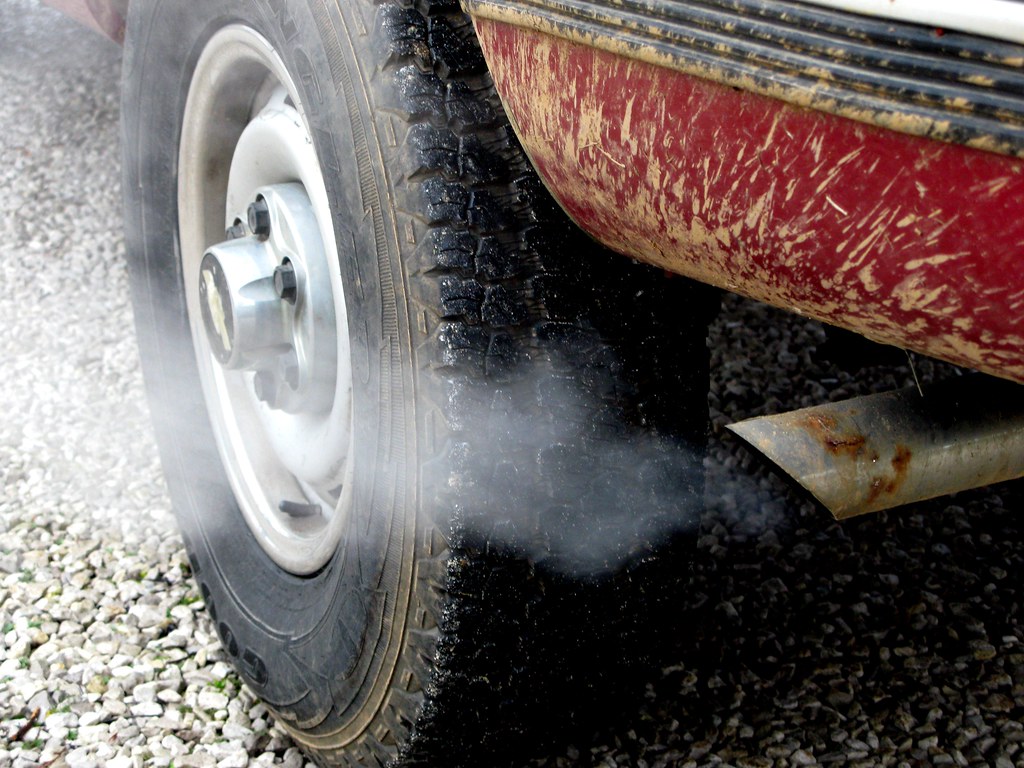Contents
– Color coding of exhaust fumes
– White smoke and water exhaust: causes and symptoms
– After the white smoke, the repair
Do you see black/blue/white fumes coming out of your car exhaust pipe? Here are some information and advice that will help you better understand the problem.
Color code of exhaust fumes
There are three very characteristic colors of smoke:
– black smoke: high engine enrichment (abnormally high proportion of fuel in the combustion);
– blue smoke: oil combustion in the engine (worn segmentation, valve stem seals, etc.);
– white smoke (the most common): malfunction due to the presence of water or coolant.
White smoke and water exhaust: causes and symptoms
It is known that white smoke is always related to water vaporized by heat (or coolant). However, there are several possible causes of the problem. Let’s try to distinguish them by taking a closer look at the symptoms.
White smoke exhaust at startup
White smoke, which can be significant at start-up, fades once the engine is warm. Two interpretations are possible:
– The steam comes from the exhaust line: when the engine starts, condensation water forms on the metal walls and is vaporized by the exhaust line’s heating.
– The water also comes from the treatment of polluting emissions by the catalytic converter: this one, by a chemical reaction, transforms the polluting components HC (hydrocarbons), CO (carbon monoxide), H²O (water). It is then possible to see water flowing out of the exhaust pipe.
Both of these situations are not dangerous and are entirely normal.
Coolant has accumulated in a cylinder with the engine at rest: when the vehicle is started, the coolant is vaporized, and dense vapor production is produced in the engine’s warm-up phase. When the engine is hot, the combustion pressure is higher than that of the cooling system. It prevents the liquid from flowing out totally or partially (cylinder head gasket or porous cylinder head), making the white smoke less perceptible.
The diagnosis can be confirmed by:
– Difficulty in starting, with the engine tending to stall, due to the presence of liquid in a combustion chamber (the liquid is incompressible and prevents the piston from rising); this symptom can lead to the deformation of the connecting rod (buckling) linked to the piston.
– Decrease of the coolant level and possibly abnormal temperature and pressure rise of the cooling circuit (hoses swell).
Significant escape of white smoke when hot
The smoke has the consistency of a dense vaporous cloud that can hinder the cars’ visibility that you precede and persist in the air for several minutes.
Here, there is no doubt that the cylinder head, or the head gasket, has given up the ghost, and if you don’t look in your rearview mirror, you will quickly be warned by the engine temperature light, until the loss of power and possibly the tightening of the engine.
After the white smoke, the repair

Before the actual repairs, it may be necessary to confirm the diagnosis.
White smoke: the checks in the workshop
– The preliminary check is the density of smoke and the odor trace of vaporized coolant: the smoke often has a pungent taste due to the glycol that makes up the liquid.
– To confirm this, the technician performs a pressure test of the cooling circuit: this operation consists of blowing air under pressure into the cooling circuit with connectors’ help. The test pressure is slightly higher than the operating pressure (1.5 bar maximum for 1 bar operating pressure) so as not to damage the hoses and radiator. As the circuit is normally tight, if there is a loss of pressure and no external leakage, the cylinder head gasket diagnosis or the cylinder head can be confirmed.
– Another control operation, less classical because few workshops have the equipment, consists of exploring the inside of the cylinders with an endoscope equipped with lighting with video. A clean appearance and absence of scale in a combustion chamber betrays coolant presence (also visible during disassembly).
White smoke: repairs
Several levels of repair are possible depending on the severity of the problem.
– Replacement of the head gasket: this operation, the least expensive, consists of removing the cylinder head and replacing the head gasket, as well as the tightening screws. Suppose the head gasket breakage is not visible to the naked eye. In that case, it will be necessary to proceed with the pressure test of the cylinder head (specialized workshop) and check its flatness (deformation due to excessive heat).
– Replacement of the cylinder head: this must be accompanied by replacing the cylinder head gasket and screws with the latter’s prior testing.
– Replacement of the “flamed” connecting rod: it is detected by measuring the pistons’ height at the top dead center. If a piston is lower (often visible to the naked eye), the connecting rod is deformed. Its replacement cost will be added to the previous repairs (head gasket). In some cases (high mileage), it may even be better to proceed with a “standard engine exchange.”
Good to know: other costs may be added, depending on the cause of the malfunction (defective thermostat, blocked radiator, etc.).
Other parts are also systematically replaced after disassembly, such as the timing system.


2 comments
[…] resulting in a decrease in engine efficiency. The problem results in a loss of power and smoke coming from the exhaust. It’s a […]
[…] if white smoke: the presence of water or coolant in the intake or cylinders (cylinder head […]